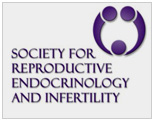Frozen Donor Eggs
How Is Frozen Egg Donation Performed?
An egg donation cycle using frozen eggs is much easier and shorter than using fresh eggs and consists of three basic steps.
- Using estrogen for about two weeks to develop the endometrium and suppress ovulation
- Thawing the and fertilizing the eggs and starting progesterone to prepare the endometrium for transfer
- Embryo transfer
A significant advantage of a frozen egg bank cycle over a fresh cycle is the ease of the egg bank cycle compared to the complexity of the fresh cycle. In the frozen egg bank cycle, the donor completes her cycle at a time convenient to her schedule. Likewise, the recipient is able to time the embryo transfer predictably and with convenience.
Egg donors through Donor Egg Bank USA have already gone through extensive medical and psychological screenings, completed their fertility stimulation drug therapy and have had their eggs retrieved and frozen using the latest assisted reproductive technology called vitrification.
With Donor Egg Bank USA all you have to do is to choose the donor you want and immediately begin treatment.
The frozen egg bank cycle can be performed within 1-2 months.
How Effective Is Frozen Egg Donation?
According to Donor Egg Bank USA’s website their 2016 pregnancy rate is 65% per embryo transfer with an ongoing and live birth rate of 47%, from 870 completed embryo transfers. Since the cost of using frozen donor eggs is about two-thirds of that of fresh eggs and the fact that they offer a 100% Assured Refund Plan, the cost of a successful outcome with frozen eggs is a lot less than using fresh eggs.






